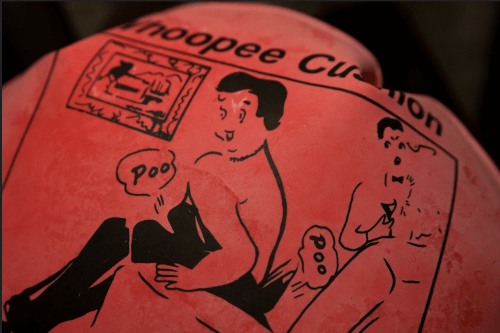How the power of impression tricks you into building the wrong features

Image credit Flickr: Steven Depolo
The Cushion Effect
I think most of us have had the unpleasant experience of dealing with a particularly pushy (or shouty) customer. Unfortunately from time-to-time, no matter what you do, they come along and you get an earful. The problem is that when this happens, you feel like you have to take action - that customer has made an impression on you and those impressions stick….this is known as The Cushion Effect.
Impressions are formed all the time and not only when you have an upset customer on the line but with particularly persuasive people and those with a lot of sway in your organisation too. It’s not only negative experience that make lasting impressions on us though. Particularly positive events like releasing a new feature which everyone in your SaaS business loves or a meeting with a promising lead all stick as important things we remember.
The quiet, everyday conversations, feature requests and day-to-day business can become overshadowed by these events which happily plonk themselves at the forefront of your mind ruining your perspective and making it hard for you to put the scenario into the context of the bigger picture.
A common example of The Cushion Effect
One of the most common scenarios we hear over and over again is the result of asking a salesperson for their most important feature request. More often than not, it will be the latest missing-feature objection that that made an impression on the salesperson.
That painful, annoying, frustrating missing feature becomes the most important thing to the salesperson. It then becomes much more important than it should be. Your salesperson doesn’t look back over a period of time, tally up all the requests, understand the priorities of those requests and come up with a reasonable judgement. Who can blame them? It’s simply not possible to hold that much data in your brain!
This isn’t just a problem in sales but for all teams in a SaaS business - noise from demanding customers, pressure from your boss to implement certain features and external forces (such as a change in legislation affecting your product) all leave an impression.
Each person within an organisation has their own opinion on which features are going to add the most value to your product. The problem is that no single person is able to get a balanced view of feature request demand and understand them within the overall strategy of the business regardless of how many spreadsheets and votes you gather.
Customers are only one source of feature requests
I’d like to stress again that feature requests aren’t just driven by your customers. Customers are just one of many groups that have pull on the direction of the product. To avoid The Cushion Effect, you must give customers and internal teams a way to record and prioritise feature requests.
We’re recently released Internal Teams in Receptive. Sales, Customer Service, Product Management, Leadership etc… all have demands on product driven by their own requirements. Gathering this data and gaining insight from it is essential for SaaS businesses if they truly want to understand which areas of product development are going to provide the greatest ROI for the company.



